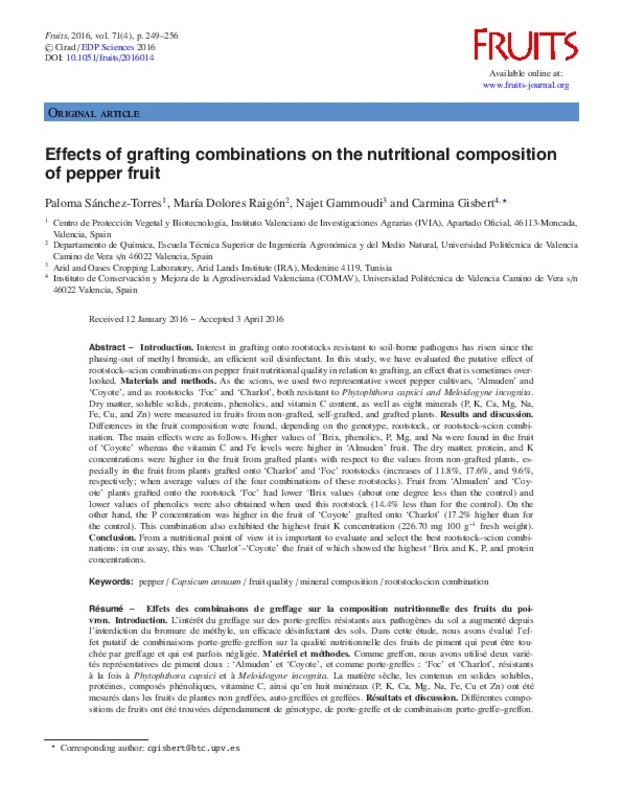JavaScript is disabled for your browser. Some features of this site may not work without it.
Buscar en RiuNet
Listar
Mi cuenta
Estadísticas
Ayuda RiuNet
Admin. UPV
Effects of grafting combinations on the nutritional composition of pepper fruit
Mostrar el registro completo del ítem
Sanchez Torres, P.; Raigón Jiménez, MD.; Gammoudi, N.; Gisbert Domenech, MC. (2016). Effects of grafting combinations on the nutritional composition of pepper fruit. Fruits. 71(4):249-256. https://doi.org/10.1051/fruits/2016014
Por favor, use este identificador para citar o enlazar este ítem: http://hdl.handle.net/10251/152265
Ficheros en el ítem
Metadatos del ítem
| Título: | Effects of grafting combinations on the nutritional composition of pepper fruit | |
| Autor: | Gammoudi, Najet | |
| Entidad UPV: |
|
|
| Fecha difusión: |
|
|
| Resumen: |
[EN] Introduction. Interest in grafting onto rootstocks resistant to soil-borne pathogens has risen since the
phasing-out of methyl bromide, an efficient soil disinfectant. In this study, we have evaluated the putative ...[+]
|
|
| Palabras clave: |
|
|
| Derechos de uso: | Reconocimiento (by) | |
| Fuente: |
|
|
| DOI: |
|
|
| Editorial: |
|
|
| Versión del editor: | https://doi.org/10.1051/fruits/2016014 | |
| Agradecimientos: |
|
|
| Tipo: |
|









